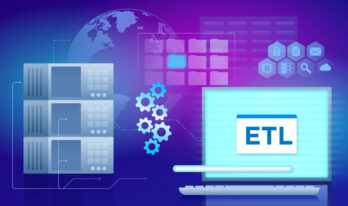With the modern business expanding rapidly, its business departments are also adding in it.
Data is generated in multiple departments in huge amounts.
But, such a vast amount of collected data needs to make sense, so that a business can benefit.
Here is where data integration comes into the picture.
Data integration is the process wherein the data collected from multiple sources is combined and present in a meaningful form to the users.
The whole process includes steps like cleaning of data, mapping with ETL, and transformation.
Let us discuss some of the questions related to data integration.
In business, one needs to take care of their customers in order to expand. This is possible by keeping updated information of the customers.
Customer data integration can be explained as a process wherein the data of customers is combined, defined and managed as well.
CDI is done in order to present the updated and accurate information of the customer to multiple business units.
CDI assists in improvising the customer relationship management.
Some of the key mistakes users make while opting for data integrations have been defined as under:
• Business Needs Are Priority
The needs of the business are important not the tools that users are going to opt for.
Many tools might be providing the data integrating practices but users should be aware of the techniques that they will be using for the collection of data.
However, the same can be rectified by always educating the team involved and understanding the needs of the modern-day business.
• Being Early
Many organizations make the mistake of implementing data at an early stage.
The drawback here is that without having any set of requirements efforts go wasted.
However, the same can be avoided by keeping certain objectives ready to work on.
• No Futuristic Approach
Installing the tools and implementing the approaches by only taking into consideration the current approach can prove fatal for any business.
With business expanding its requirements to change.
And when such requirements arrive and if an organization is not capable of meeting such requirements they will have to opt for new solutions.
All of this can be often costly.
However, same can be avoided if a futuristic approach is implemented at the beginning of the project.
Also Read: Data loss prevention techniques: You should follow.
Some of the benefits of a high-quality integration system are as under:
• Time saving
Manually integrating data can be a hectic process as well as a time-consuming process.
Chances of repetitive tasks and errors are high if an organization goes the manual way.
However, the availability of a robust data integration lessens the burden.
Tools on the other hand will save much time and effort for any organization.
• Less Errors
An efficient software will assist users in managing length data.
Accurate software and the same setup across the teams can lessen the errors efficiently.
Consistency in setups and tools will assist users in keeping the data replications at a minimum.
• Better Quality Data
Data if efficiently collected and properly integrated assist organizations in optimizing data.
High-quality integration assists organizations in receiving better quality of data as the quality issues are pre-identified.
This thus means that the data that is presented is in a much better state of being used.
Some of the key best practices for data integration are as below:
Traditional mainframe systems hold highly important data that remains important for integrations.
Data that needs to be integrated should be in accordance with the business objectives.
To include the data from external sources users can even take help from third-party analytics.
Such analytics may include data related to consumer location, traffic analysis, etc.
Roles and responsibilities need to be distributed appropriately.
Without efficiently managing the roles and responsibilities integrations can become messy as it may often result in confusion or workloads.
Moreover, the data integration team should also include an internal customer expert in order to understand the demands of customers.
Select the proper tool that will assist in deriving the meaning out of the collected data.
The right platform will assist users in sorting and categorizing the data.
Such platforms not only sort and categorize but will also assist users in cleaning the data that is not having complete information or is in the wrong format.
Teamwork is always needed to complete the tasks efficiently and let them be well executed.
Integration is a lengthy process and can’t be executed by a single team as data need to be integrated from multiple units.
It is advised to include other teams too in the decision-making of the same.
Data integration often faces complexities.
Moreover, hiring an accurate skilled person for handling such complexities is again very difficult for some.
Enterprise-grade tools are good at such tasks.
Such tools are capable of handling complexities behind the scene and assist IT people in focusing on other tasks like designing and mastering the overall process.
Having a short-term data goal with data integrations will fail you.
Users may receive certain benefits quickly but in the long run, it may be difficult for the company to adapt to the changing needs.
Users should opt for an approach that will secure them from any futuristic change a business demands.
Users should also focus on that type of tool that can adjust such changes.
One of the traditional best practices is acknowledging stakeholders which means everyone involved in the practice has to be held accountable for their services provided.
Conclusion
Data is the backbone of the business and has to be managed efficiently. Data is managed differently based on the objectives of the businesses. Above mentioned practices will assist our users in executing the data integration process effectively for everyday business.
Also Read: Data Masking Best Practices: Every Data User Should Follow




